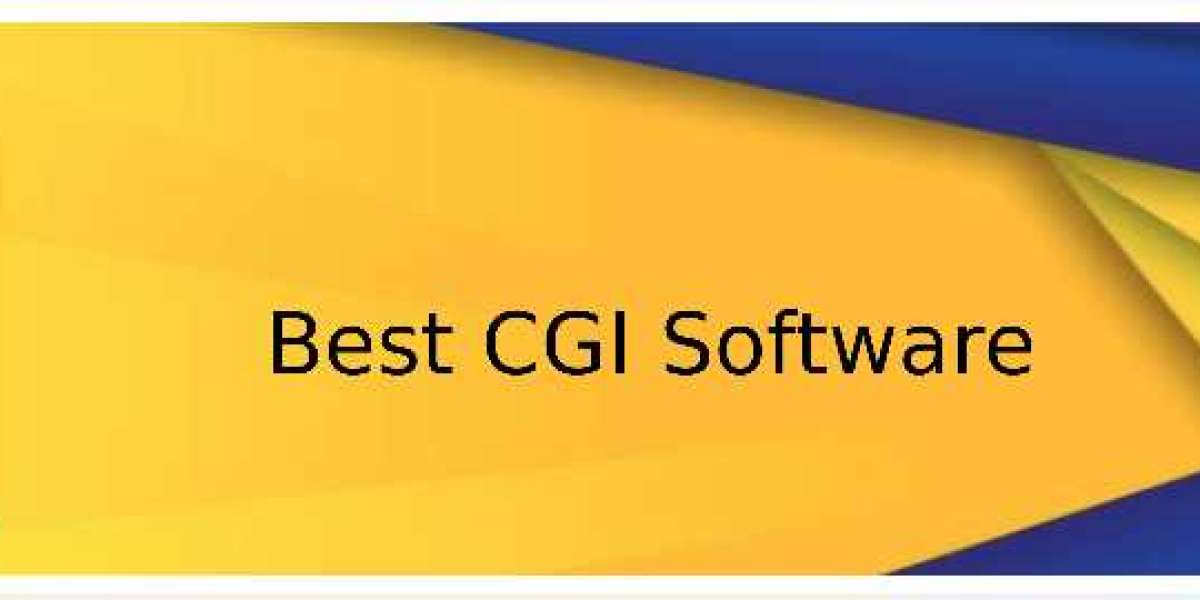Computer-Generated Imagery (CGI) has revolutionized the world of visual effects, animation, and digital art. Whether you're an aspiring animator, a budding filmmaker, or a creative enthusiast, having the right CGI software is crucial to bringing your visions to life. In 2024, the market offers a variety of beginner-friendly CGI software options that cater to different needs and skill levels. This guide will walk you through the top 10 best CGI software for beginners, highlighting their features, benefits, and why they stand out.
1. Blender
Overview: Blender is a free and open-source software that has gained immense popularity due to its comprehensive toolset and vibrant community.
Key Features:
- Full-fledged 3D modeling, animation, and rendering capabilities.
- Extensive library of plugins and add-ons.
- Active community and numerous tutorials available.
Why It’s Great for Beginners: Blender’s user-friendly interface, coupled with its vast array of tutorials and support, makes it an excellent starting point for beginners. The fact that it's free also allows new users to explore without any financial commitment.
2. Autodesk Maya
Overview: Autodesk Maya is a powerful, industry-standard software used by professionals in film, TV, and gaming.
Key Features:
- Advanced animation tools and rigging capabilities.
- Comprehensive modeling and simulation features.
- Integration with other Autodesk products.
Why It’s Great for Beginners: While Maya is known for its complexity, Autodesk offers educational versions and extensive learning resources that can help beginners get up to speed quickly.
3. Cinema 4D
Overview: Cinema 4D, developed by Maxon, is renowned for its user-friendly interface and robust functionality.
Key Features:
- Intuitive interface and easy-to-learn workflow.
- Excellent motion graphics capabilities.
- Strong integration with Adobe products.
Why It’s Great for Beginners: Cinema 4D’s straightforward design and powerful features make it ideal for beginners who want to create professional-quality animations and visual effects.
4. Houdini Apprentice
Overview: Houdini by SideFX is known for its procedural generation capabilities, making it a favorite among VFX artists.
Key Features:
- Node-based workflow for flexibility and control.
- Advanced simulation tools for particles, fluids, and destruction.
- Free Houdini Apprentice version for non-commercial use.
Why It’s Great for Beginners: Houdini’s Apprentice version allows beginners to explore high-end features without a financial investment. The node-based approach, while initially challenging, offers great creative freedom.
5. SketchUp
Overview: SketchUp is a 3D modeling software that emphasizes simplicity and ease of use.
Key Features:
- Intuitive and easy-to-learn interface.
- Extensive library of pre-made models and textures.
- Integration with various plugins and extensions.
Why It’s Great for Beginners: SketchUp’s simplicity makes it an excellent choice for beginners, especially those interested in architectural visualization and simple 3D modeling.
6. Daz 3D
Overview: Daz 3D focuses on character creation, morphing, and animation, making it a great tool for beginners interested in creating 3D characters.
Key Features:
- Pre-built character models and assets.
- Easy-to-use posing and animation tools.
- Extensive marketplace for additional assets.
Why It’s Great for Beginners: Daz 3D’s pre-built assets and intuitive tools allow beginners to create detailed characters without needing advanced modeling skills.
7. Tinkercad
Overview: Tinkercad is a simple, online 3D design and modeling tool by Autodesk.
Key Features:
- Browser-based interface, no installation required.
- Simple drag-and-drop functionality.
- Integration with 3D printing services.
Why It’s Great for Beginners: Tinkercad’s simplicity and ease of use make it perfect for beginners, especially young learners and hobbyists.
8. ZBrushCoreMini
Overview: ZBrushCoreMini is a simplified version of the industry-standard ZBrush, focusing on digital sculpting.
Key Features:
- Basic sculpting tools and features.
- Intuitive interface designed for beginners.
- Free to use, with options to upgrade.
Why It’s Great for Beginners: ZBrushCoreMini offers a great introduction to digital sculpting, providing essential tools without overwhelming complexity.
9. Lightwave 3D
Overview: Lightwave 3D by NewTek is known for its powerful modeling and animation tools.
Key Features:
- Comprehensive 3D modeling and rendering capabilities.
- Real-time interactive interface.
- Extensive support and resources.
Why It’s Great for Beginners: Lightwave 3D’s robust feature set and supportive community make it a solid choice for beginners looking to grow their skills.
10. KeyShot
Overview: KeyShot is a rendering software that focuses on providing high-quality visuals with minimal effort.
Key Features:
- Real-time rendering for instant feedback.
- Simple, user-friendly interface.
- Extensive material library and lighting presets.
Why It’s Great for Beginners: KeyShot’s focus on ease of use and high-quality output makes it perfect for beginners who want to produce professional-looking renders without a steep learning curve.
Conclusion
Choosing the right CGI software is a crucial step in your journey as a digital artist or animator. Each of the software options listed above offers unique features and advantages tailored to beginners. Whether you're interested in character creation, architectural visualization, or full-fledged animation, there's a tool here to suit your needs. By starting with these beginner-friendly software options, you can develop your skills and eventually move on to more advanced techniques and tools. Happy creating.



